CAIIB Registration 2022 in Hindi: CAIIB, इंडियन इंस्टीट्यूट ऑफ बैंकर्स के सर्टिफाइड एसोसिएट, इंडियन इंस्टीट्यूट ऑफ बैंकिंग एंड फाइनेंस (IIBF) द्वारा आयोजित एक प्रमोशनल-संचालित परीक्षा है. CAIIB रजिस्ट्रेशन 2022, 30 सितंबर 2022 से IIBF की आधिकारिक वेबसाइट पर शुरू हो गया है. इच्छुक और योग्य उम्मीदवार सीधे नीचे दिए गए लेख में दिए गए लिंक पर क्लिक करके नवंबर-दिसंबर सत्र के लिए अपना CAIIB रजिस्ट्रेशन 2022 पूरा सकते हैं. इस पोस्ट में, उम्मीदवार CAIIB आवेदन ऑनलाइन लिंक, आवेदन शुल्क, पात्रता मानदंड और IIBF CAIIB 2022 परीक्षा के लिए रजिस्ट्रेशन करने के चरणों के बारे में पूरी जानकारी प्राप्त कर सकते हैं.
CAIIB Registration 2022
भारतीय बैंकिंग और वित्त संस्थान (IIBF) ने अपनी आधिकारिक वेबसाइट iibf.org.in पर 30 सितंबर 2022 से CAIIB नवंबर-दिसंबर 2022 परीक्षा 2022 के लिए ऑनलाइन आवेदन स्वीकार करना शुरू कर दिया है. JAIIB प्रमाणित सभी उम्मीदवार CAIIB 2022 नवंबर-दिसंबर एटेम्पट के लिए पात्र हैं. CAIIB 2022 के लिए पात्र और इच्छुक उम्मीदवार आधिकारिक वेबसाइट या नीचे आर्टिकल में दिए गए लिंक से ऑनलाइन आवेदन कर सकते हैं. CAIIB 2022 परीक्षा आयोजित करने का मुख्य उद्देश्य उन्नत बैंक प्रबंधन, बैंक वित्तीय प्रबंधन, ग्रामीण बैंकिंग, खुदरा बैंकिंग, मानव संसाधन प्रबंधन, आईटी, जोखिम प्रबंधन केंद्रीय बैंकिंग, आदि IIBF के सदस्यों को बेहतर निर्णय लेने के लिए आवश्यक उन्नत ज्ञान प्रदान करना है.
सीएआईआईबी रजिस्ट्रेशन 2022: महत्वपूर्ण तिथियां (CAIIB Registration 2022: Important Dates)
उम्मीदवार नवंबर-दिसंबर अटेम्प्ट के लिए CAIIB पंजीकरण 2022 से संबंधित सभी महत्वपूर्ण तिथियों की जांच कर सकते हैं
|
Particulars |
Important Dates |
|
Starting Date of CAIIB Registration 2022 |
30th September 2022 |
|
Last Date for CAIIB Registration 2022 |
20th October 2022 |
|
CAIIB November-December 2022 Exam Dates |
27th November, 04th December, and 10th December 2022 |
CAIIB Registration 2022: Online Registration Link
नवंबर-दिसंबर सत्र के लिए CAIIB पंजीकरण 2022 30 सितंबर 2022 से शुरू हो गया है और 20 अक्टूबर 2022 तक जारी रहेगा. उम्मीदवारों की सुविधा के लिए, CAIIB पंजीकरण 2022 के लिए लिंक नीचे दिया गया है. इच्छुक उम्मीदवार इस लिंक पर क्लिक कर सकते हैं जो उन्हें IIBF की आधिकारिक वेबसाइट पर ले जाएगा, जहाँ वे IIBF CAIIB 2022 परीक्षा के लिए ऑनलाइन आवेदन कर पाएंगे. CAIIB Registration 2022: Apply Online उम्मीदवारों की सुविधा के लिए, हम नीचे CAIIB रजिस्ट्रेशन लिंक प्रदान कर रहे हैं ताकि आपको किसी भी प्रकार की परेशानी का सामना न करना पड़ें. उम्मीदवार अब नीचे दिए गए लिंक पर क्लिक करके CAIIB रजिस्ट्रेशन 2022 कर सकते है.
CAIIB Registration 2022: Apply Online
How To Apply For CAIIB 2022?
CAIIB 2022 के लिए आवेदन करने के लिए उम्मीदवारों की मदद करने के लिए, हम नीचे detailed steps प्रदान कर रहे हैं।
- Visit Institute’s web site www.iibf.org.in
- If a member of the Institute Click on “members” under ‘Apply for exams online’.
- Read rules/syllabus/eligibility for examinations carefully
- Read instructions to the applicant carefully.
- Select the examination you wish to apply;
- Logon in with your membership number and password;
- Read the instructions carefully and accept;
- Fill in the details like mode, medium, centre for the exam as also the place of work, etc.;
- Click on ‘preview’.
- Check whether the data is correct, click on ‘accept and submit’ for online payment;
- Before submitting the online application form the applicant shall ensure that the details are filled in properly and spelled correctly in the application.
- Select the payment option (credit/debit card, net banking) and follow the on-screen instruction to complete the process
- On successful completion transaction, details will be displayed and the same will be emailed/SMSed to you for your information and record
- If the process is not successful/incomplete appropriate message will be displayed on the screen and the applicant has to follow the online process again.
- After submitting your payment information, please wait for the intimation from the server, it may take 1 to 5 seconds to process the request, but it may take longer in certain cases. DO NOT press submit button once again, or the Back or Refresh button.
- Any communication in regard to online exam fees should be sent to iibfexam@iibf.org.in
- In case payment is debited from the candidate’s account and the transaction is not successful/completed, Institute will refund the entire fees electronically within 10-12 working days from the date of transaction. The refund timeline indicated is approximate, as the processing of refunds is dependent on multiple organizations and working days/holidays of banks/financial institutes.
CAIIB Registration 2022: Fees
उम्मीदवार शुल्क के साथ CAIIB रजिस्ट्रेशन तिथियों की जांच कर सकते हैं
|
CAIIB November 2022 Registration Dates |
Registration Fees |
|
IIBF CAIIB Registration from 30th September to 06th October 2022 |
Normal Examination Fees |
|
IIBF CAIIB Registration from 07th October to 13th October 2022 |
Normal Examination Fees Plus Rs 100 |
|
IIBF CAIIB Registration from 14th October to 20th October 2022 |
Normal Examination Fees Plus Rs 200 |
CAIIB Registration 2022: Eligibility Criteria
भारतीय बैंकिंग और वित्त संस्थान के दिशानिर्देशों के अनुसार, केवल वे उम्मीदवार ही CAIIB परीक्षा के लिए आवेदन कर सकते हैं जिन्होंने JAIIB या एसोसिएट परीक्षा का भाग 1 पास किया हो।
FAQs: CAIIB Registration 2022
Q.1 When will the CAIIB Registration 2022 for the November-December session begin?
Ans. The CAIIB Registration 2022 for the November-December session will begin on 30th September 2022.
Q.2 Who all are eligible for the CAIIB Registration 2022?
Ans. The employees who have completed JAIIB or part-1 of the Associate Examination are eligible for the CAIIB Registration 2022.



 RRB NTPC Undergraduate Score Card 2025 ज...
RRB NTPC Undergraduate Score Card 2025 ज...
 IB ACIO Result 2025 OUT: MHA ने जारी किय...
IB ACIO Result 2025 OUT: MHA ने जारी किय...
 RRB NTPC Undergraduate Result 2025 OUT: ...
RRB NTPC Undergraduate Result 2025 OUT: ...








